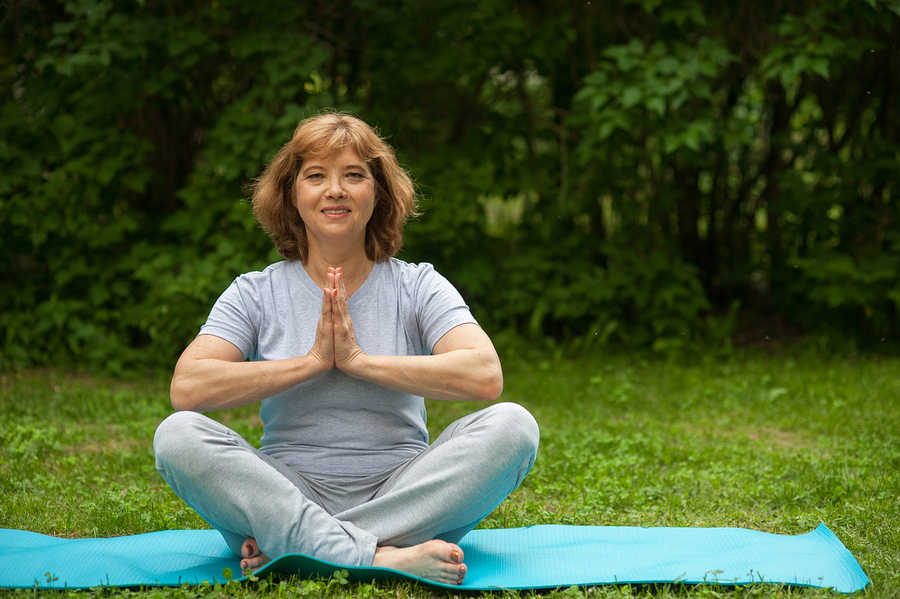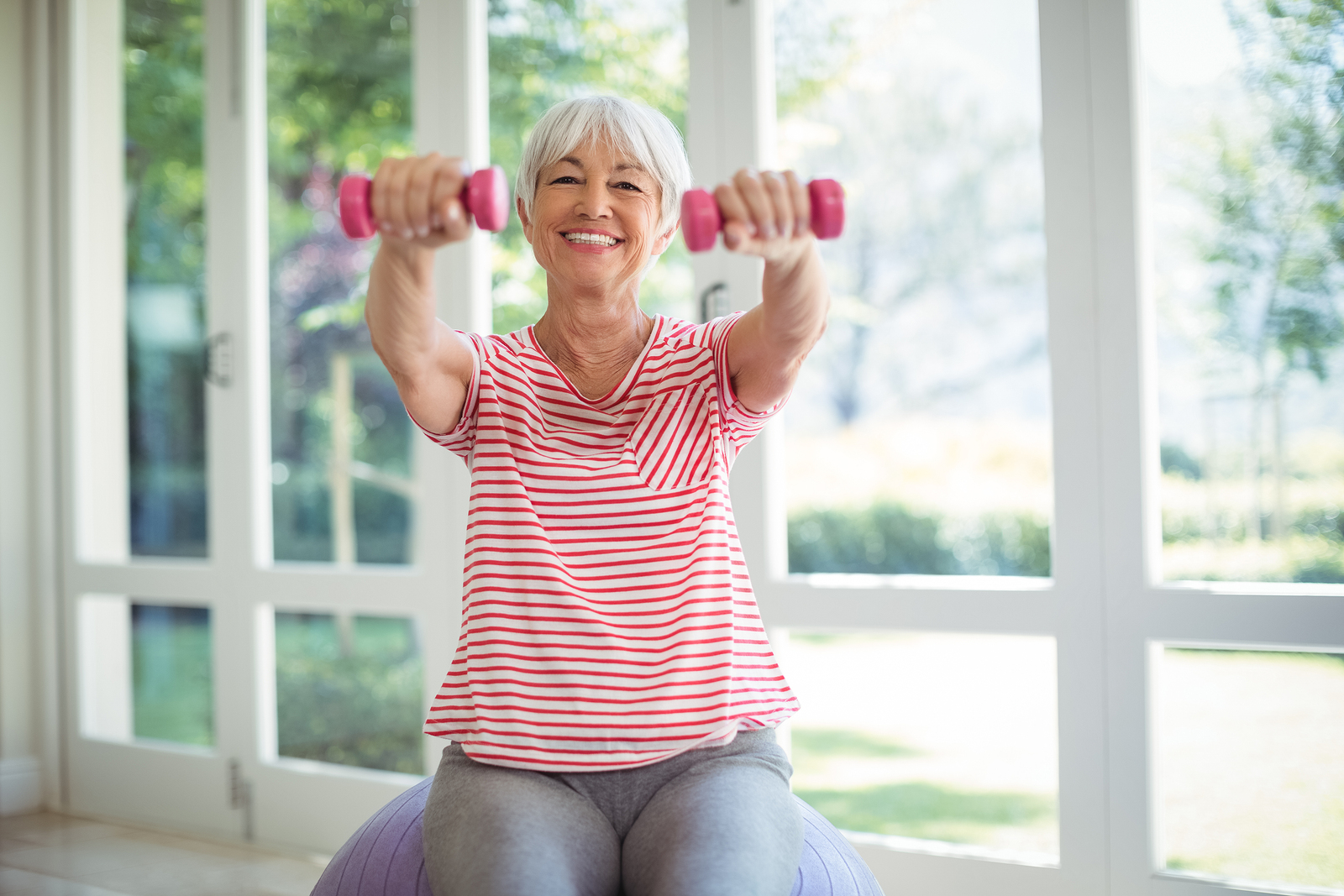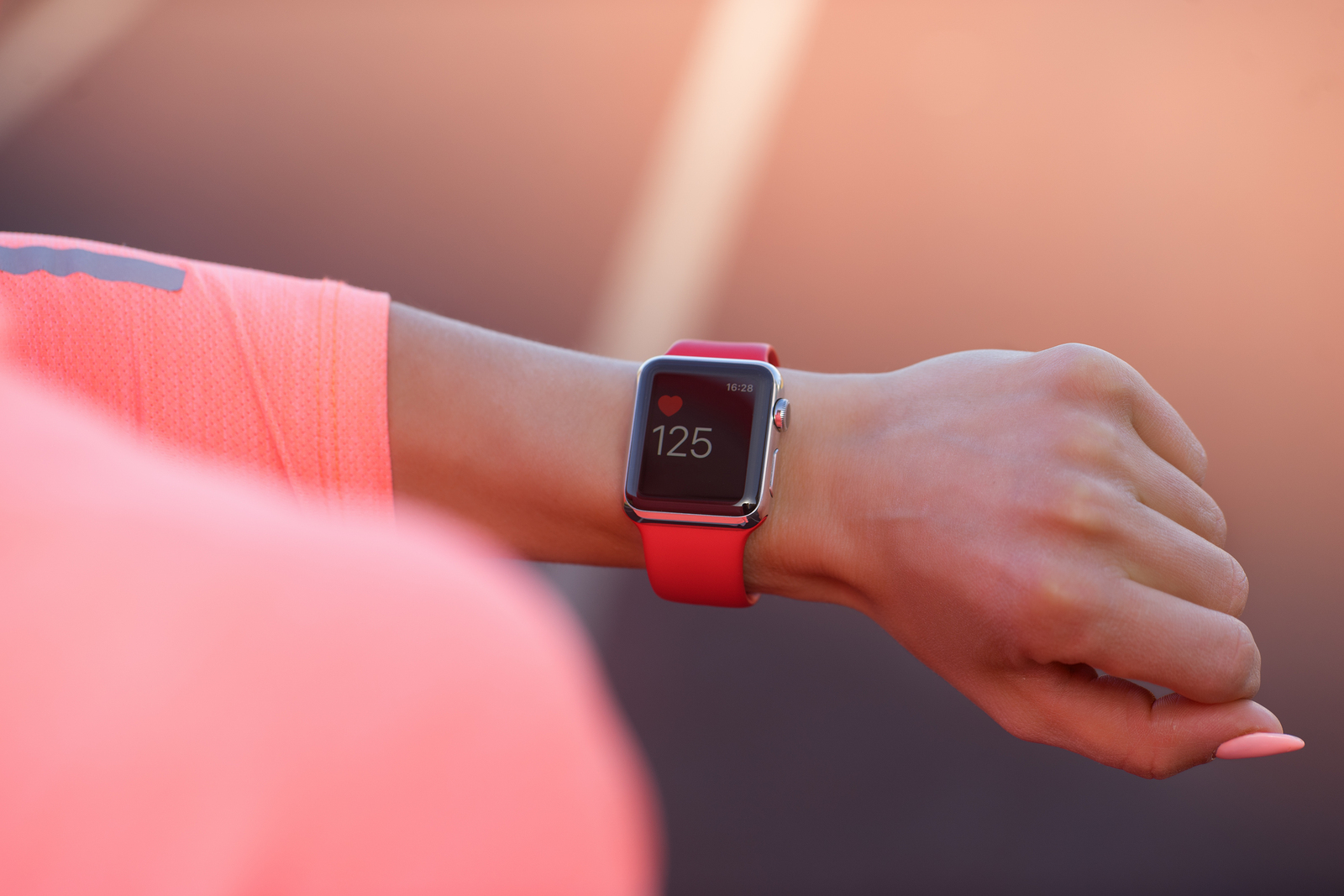Updated 06/11/2020
I was talking to my client, Christa, the other day about how important exercise can be to good health. She was nodding as I detailed the studies that have shown how exercise fights aging, regulates blood sugar, reverses weight gain, relieves depression, lowers blood pressure, wards off cognitive decline, and protects against heart disease. But I lost her when I said the most essential exercise of all is breathing.
Her confused expression made it clear that she’d never thought of breathing that way. But I think focusing on breathing is the perfect place to start making a new commitment to physical fitness.
So many of my clients, Christa included, tell me that regular exercise is the hardest lifestyle recommendation to stick to. Life gets busy, stress piles up, and exercise falls by the wayside – just when it’s most important!
But breathing is something we all have to do, so why not make it step one in a regular exercise plan?
Yes, there’s a best way to breathe
Obviously, every person alive is breathing. But they may not be breathing in the best way for peak health. Proper breathing fully oxygenates your cells, helping them function at an optimal level. We can’t survive more than a few moments without breath, yet we consistently overlook this most-important body function when we think about our well-being. As a bridge to exercise, breathing will jump-start or enhance many of the health benefits of regular movement. Let’s see how – and why – you should learn to breathe properly.
Breathing for health
When women come through the doors at my practice, they usually know that diet and exercise are cornerstones of good health. They tell me they want to “be better” about going to the gym, but just can’t stick with it after a month or two. Most say it’s much easier to change their eating habits over activity levels because eating is required for survival, while exercise, technically, is not (though mere survival isn’t what we’re striving for, I hope).
Exercise makes us breathe differently, something that most of the women I see need to learn! When I run the regular panel of tests on my patients, a majority of women show irregularly high carbon dioxide levels in their blood. In fact, this is consistently the most abnormal reading I see, including readings from standard glucose, kidney and liver tests.
Now, this isn’t life threatening, but it does tell me that these patients aren’t inhaling enough oxygen or exhaling enough carbon dioxide. And hanging on to too much carbon dioxide can have consequences like fatigue, mental fog and decreased tissue function. I often note “needs to breathe” on a patient’s chart, and I have to explain to them that I don’t mean the shallow chest breathing many of us default into. Deep, meaningful belly breaths are what help keep carbon dioxide levels lower.
The importance of oxygen
Your cells must have oxygen to survive moment to moment. To thrive, they rely on a complex exchange between the circulatory system and the lymphatic system. Blood flow carries nutrients and ample amounts of oxygen into the capillaries, while a healthy lymphatic system carries away destructive toxins. Proper breathing is the master of this exchange.
One of the reasons aerobic exercise is good for you (and is so good at clearing away mental cobwebs) is that it increases your heart rate and forces your lungs to take in more oxygen while expelling more carbon dioxide. This gives your heart a good workout (it is a muscle after all) and pumps a quick jolt of oxygen through your cells, even those that may have been operating at reduced capacity.
Shallow breathing (or chest breathing) causes a constriction of the chest and lung tissue over time, decreasing oxygen flow and delivery to your tissues. Deep, rhythmic breathing that expands the diaphragm muscle— the cone-shaped muscle under your lungs—works like a pump in your body, expanding the lung’s air pockets and stimulating digestion and elimination by massaging the lymphatic system.
Breathing and your lymph system
Lymph nodes don’t come up all that often. Usually we only think of them when we hear someone has been diagnosed with cancer. But your body has twice as many lymph vessels as it does blood vessels, so we shouldbe thinking about them!
Your lymph system is like your body’s sewer system. Lymph vessels are everywhere throughout your body. Our cells swim in an ocean of lymphatic fluid that carry away unused blood protein, dead cells and toxins. It works like this: blood is pumped around the body by the heart, transporting nutrients and oxygen to the cells. Once the cells have absorbed what they need, they excrete debris and toxins, which get flushed and deactivated by lymphatic fluid.
The lymph fluid then drains into the circulatory system through two ducts at the base of your neck (the thoracic duct) and become part of the blood and plasma that pass through the kidneys and liver. But unlike your circulatory system, your lymph system does not have a built-in pump. It relies on the acts of breathing and bodily movements to pass all that waste fluid.
The bottom line is if your lymph system is not working efficiently, proper detoxification is impossible. And if you aren’t breathing deeply or moving, chances are your lymph is not flowing as well as it could. As you might imagine, over time this can lead to some health concerns, including weight gain, muscle loss, high blood pressure, fatigue and inflammation.
But the great news is that you can begin moving lymph fluid more efficiently through your body by learning how to practice deep breathing. The expansion and contraction of the diaphragm pumps your lymph system and massages your internal organs, which helps rid the body of toxins. This leaves more space in the cell for an optimal exchange of oxygen.
As an added bonus, while you are helping your body clean house, you’ll also be fighting stress.
Related article: Lymphatic System – How to Keep Yours Healthy
Breathing and the Relaxation Response
Deep breathing is the fastest way to trigger the parasympathetic nervous system, or what some practitioners call the relaxation response. The sympathetic nervous system, which is stimulated in times of stress and anxiety, controls your fight or flight response, including the unhealthy spikes in cortisol and adrenaline.
As many of you know chronic stress depletes the body of nutrients and destabilizes brain and endocrine chemistry. Depression, muscle tension and pain, insulin sensitivity, GI issues, insomnia and adrenal fatigue, along with scores of other conditions, are all related to an overworked sympathetic nervous system. What counteracts this mechanism? The parasympathetic nervous system.
Breath is the fastest way for these systems to communicate, flicking the switch from high alert to low in a matter of seconds.
When someone is scared or stressed, they tend to hold their breath or breathe rapid, shallow breaths. The heart pounds and muscles clench as the adrenaline kicks in (for more on this see my article on anxiety). When their fear subsides, they let out a deep breath, which sends a message to the brain that everything is O.K. If deep breathing continues, the heart rate decreases, the lungs expand and the muscles relax. Equilibrium is restored.
Many Eastern cultures have long recognized the importance of breathing to cultivate a positive relationship between the body and the mind, one that results in a more tranquil state of being and a more resilient physiology. There’s a lot of information available about the role of breathing in mindful practices, which more and more people are tuning into. Yoga, qigong and Tai chi are such healthy practices because they combine deep breathing and movement to support a steady central nervous response.
And this can be important when you are trying to lose weight and burn fat.
Breathing and weight loss
Information about the cumulative benefits of aerobic and anaerobic exercise is often confusing and inconclusive. But both types of exercise are important in becoming truly fit. Anaerobic exercise (like sprinting and weight-training) builds strength and muscle mass and occurs when your muscles are metabolizing their own stored sugars (or glycogen) into lactic acid. This conversion does not need much oxygen in order to take place.
Aerobic exercise (like brisk walking, raking leaves, riding the treadmill) increases the body’s supply of oxygen to the cells (and the removal of lactic acid) by making your heart pump faster and your lungs breathe harder. If activity is continued for longer than 15 minutes, the body begins to draw on its reserves of fat to meet the higher energy demands. While the mechanism is complicated, the outcome is the same: aerobic activity burns fat. So, in order to lose fat (or convert fat to muscle) an ample supply of oxygen is crucial.
And that’s where breathing comes in. Whatever stage you are at in your exercise routine, oxygenating your cells through deep breathing will enhance your body’s ability to “burn” fat even hours after you’ve stopped moving.
Once I explained all of this to her, Christa understood why proper breathing is so important. But she had no idea how to go about it.
There are many great techniques to help you train yourself to breathe deeply. Noticing your breath is the first step in developing healthy breathing habits. For specific suggestions, read my article Deep Breathing the Truly Essential Exercise.
Enhance your exercise routine
If you are currently exercising, think about how your routine could be enriched by paying more attention to your breath. Mindful exercise that synchronizes movement and breath has the power to change more than how you look. A 2002 study from Columbia University showed that yogic deep-breathing techniques were as good at handling depression, eating disorders and obesity as other forms of medicine.
Many local YWCAs, community centers and health clubs recognize the importance of breathing and exercise. Classes in healthy techniques like Pilates and yoga are now standard fare. Taking it one step at a time with respect and consideration towards your amazingly complex body will ensure that you create a lifetime of exercise and well-being, not just a passing resolution.
Making Time for Yourself a Priority
I often tell my patients, “Pay yourself first.” So often, women make time for everyone else, rising to meet the demands of others before they nurture themselves. Learning how to breathe fully and deeply is a very small, but very important, way to take a moment to honor yourself and your miraculous life. In many cultures and religions, breath is life—a divine connection to a force that binds us all to the ebb and flow of nature.
By taking a few moments out of your day to really pay attention to the inhalations and exhalations that support your life, you will slowly and surely move toward a healthier and happier place. Remember, small changes add up to big improvements—and what better way to begin?








